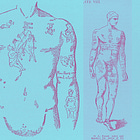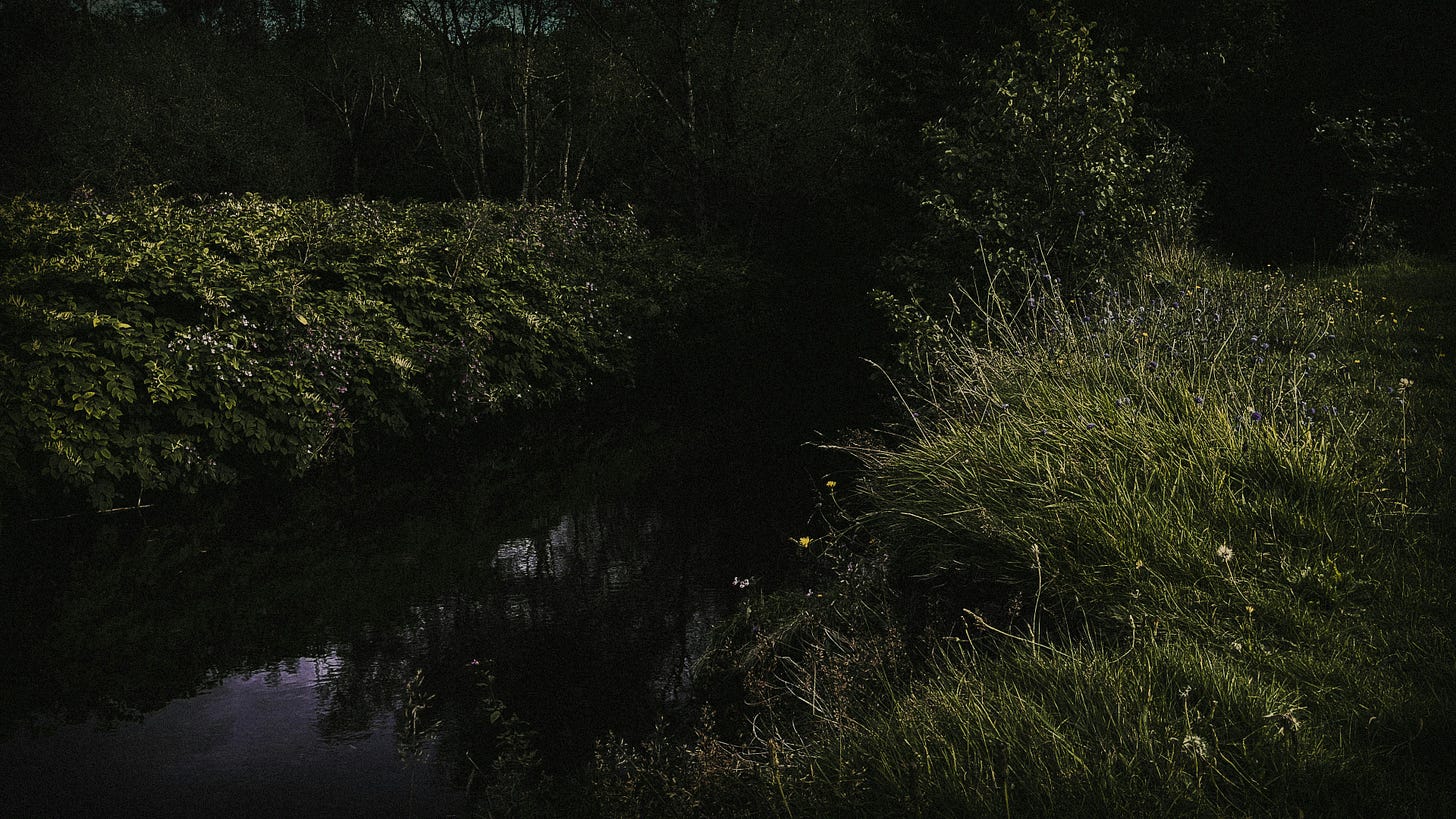The coffin flood
'For all we know, hundreds of bodies have been washed down the river, and some of them have gone into the sea' - the horror of Manchester's worst flood

The storm that lashed Manchester on 13 July 1872 was like nothing ever seen before or since on the streets of England’s rainy city.
To the north east, close to what is now the Etihad Stadium, the River Medlock became such a torrent that it took out two bridges.
But that was nothing compared with what happened when the flooded river reached the nearby Manchester City Cemetery at Philips Park.
The water suddenly burst through the cemetery wall and began racing across the section of graves where the city’s Catholics were buried.
It was the start of an afternoon so horrifying that it is still spoken about in that corner of the city today.
“The result was indescribably distressing and ghastly,” the Victorian chronicler of Manchester’s history William Axon later wrote.
It was the families living near the river’s edge who saw them first. Bodies had been washed out of their graves and were floating downstream.
A story in the Penny Illustrated described how mothers and children stood aghast on the bank as dozens of bodies began sweeping past.
They floated down to Ancoats Bridge at Pinmill Brow, where some of them became stranded among the trunks and branches of trees that were also downed in the flood.
Soon, police officers were fishing out bodies and taking them to Fairfield Street Police Station.
“Other’s floated into adjoining cellars and gardens,” the newspaper said. “In the garden of one beer house, four naked bodies floated.”
“Anybody with a spark of generous sympathy in him must have had his feelings deeply touched to see here and there little groups of poor people tearfully watching the raging flood lest any moment the graves of those they were wont to treasure as their most dear and precious were deluged by the water and their bodies carried headlong down the stream.”
— The Manchester Examiner
In addition to the horrifying scene, the Great Flood as it became known in Manchester caused untold damage to homes of the living.
In Palmerston Street in Ancoats, the water was reported to have reached some bedroom windows and people had to be rescued using rafts.

Among the worst affected were the pour souls living to the south east of London Road train station (now Piccadilly).
In the low lying slums there, where thousands of people were packed into alleyways and confined courtyards, the effects of the flood were said to be "fearful".
"Houses have been gutted by the swollen stream, and in many cases every stick of furniture and all the clothing has been swept away by the relentless rush of water," the Manchester Times wrote.
In Charles Court, which stood below the level of the river and hemmed in by high walls, the cellar dwellings were completely submerged beneath water, mud and filth.
Hundreds of women, the newspaper said, were wandering the streets or crouching in front of their homes waiting for help that would not arrive.
Amazingly, according to Axon, only one person died in the flood.
"Some with natural energy of character have set to work to repair as best they may the ruins of their wretched homes. Others, in blank despair, are crouching amid the wreck of their furniture, surrounded by ragged and wailing children, and utterly bewildered and stunned by the calamity which has befallen them."
— The Manchester Times
When the water finally subsided an inquiry was held to find out why so many bodies of the city’s Catholic poor had been washed away.
The town clerk was forced to deny that Manchester Corporation knew, when the cemetery was being planned, that the Catholic section was unsuitable for burials after two previous floods.
Canon Edmund Cantwell, the parish priest of St Patrick’s Church in Collyhurst, refused to bury more parishioners there.
Another priest, Fr Gornall, said he had it on good authority that the Catholic ground was meant to have been a shrubbery.
Half of Manchester was in a “ferment” because it was believed that up to 500 bodies were missing, the inquiry was told, although the corporation claimed only 72 were swept away.
The flood led to the priests opening a new cemetery, St Joseph’s in Moston, which is still in use for Catholic burials today.
It is more than two miles from the river.
“We have the previous promise by the corporation that the cemetery was safe and it is the duty of those in authority to say that no recurrence of calamity so revolting shall take place,” Fr Gornall told the inquiry.
“There is no nothing equal to it in the history of any country.
“For all we know,” he added, “hundreds of bodies have been washed down the river, and some of them have gone into the sea.”
The Medlock: Manchester’s Red River
I hope you found this week’s story interesting. It shows that sometimes even quiet, leafy cemeteries have a story to tell.
I walked above the River Medlock a few weeks ago while on my way from town to watch my son taking part in an athletic tournament near the Etihad.
It looks gloomy and dark as it bubbles along beneath the bridge at Merrill Street.
But many people in east Manchester know the Medlock as the Red River — an ironic name given its closeness to City’s stadium.
It’s due to the fact that, following the Great Flood, city engineers re-shaped the river into a channel lined with an artificial bed of eight million red Accrington bricks to try to stop another disaster.
The slippery bricks made the river a danger for the area’s children — as my dad’s cousin David discovered after he fell in and was swept downstream before he was very luckily pulled to safety by his brother and a friend.
Over the last few years, the Medlock has been undergoing “rewilding” by environmentalists who have been removing the bricks to return the river to its natural state.
Do you have any memories of the Red River or have any family connections to the Great Flood?
If you do, feel free to drop a line into the comments below or the chat group. I’d love to hear your story.
New family history talks online
Thank you for continuing to read this little newsletter. By reading it you really are helping to keep the newsletter alive.
If you could consider becoming a paid subscriber, it will help to support me in writing it.
Last summer I mentioned that I was planning to offer some online talks on family history and I’ve finally managed to get them online and offer some tickets for sale.
I’m currently doing five of them over the summer, with the first one starting in June.
For details on each talk, which will give you advice and tips on how to carry out your own research, visit this link.
The dates are:
12 June
Mapping your ancestor’s home — using open-source skills borrowed from investigative journalism.
28 June
Tracing your First World war ancestors in France — a talk based on my experience of travelling to the Somme to follow the final journey of my great-uncle.
12 July
Tracing your criminal ancestors — using tools including registers of tattoos to tell their story.
2 August
Tracing your Irish ancestors — using novel techniques including making your own maps to work out where they were from.
16 August
Writing your family history — based on my experience of writing my creative non-fiction history book on Angel Meadow.
The talks are on Zoom from 12 noon and cost £12 each (plus a booking fee).
If you become a paid subscriber to this newsletter, you’ll get access to all the talks for free (worth over £60).
Hope you have a great weekend.









Fabulous storytelling, Dean! Well done. Reminds me the flooding in Montecito, California just a month or so ago when a recent atmospheric river blew across the Pacific.
Hi Dean, just became a paid subscriber , will the online talks be accessible any time after the initial time slot or just at the time you do them ?
Thanks